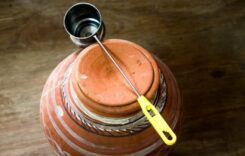Two American economists won the Nobel Prize on Monday for improving the theory of how auctions work and inventing new and better sale designs that are presently woven into numerous pieces of the economy.
The revelations of Paul R. Milgrom and Robert B. Wilson “have benefitted sellers, buyers and taxpayers around the world,” the Nobel Committee stated, noticing that the bartering designs created by the victors have been utilized to sell radio frequencies, fishing quantities and air terminal landing spaces.
The two economists analysts are based at Stanford University in California, and Milgrom said he got updates on their success “in a strange way.”
“I got a knock at my door from Bob Wilson,” he told The Associated Press. “He was my Ph.D. advisor, and he lives right across the street from me.”
Milgrom said understudies, companions and partners had since quite a while ago recommended he and Wilson may be expected for the prize.
“It’s really sweet actually,” he said. “It’s nice to have their respect but their affection as well.”
The victors were reported in Stockholm by Goran Hansson, secretary-general of the Royal Swedish Academy of Sciences, adjusting seven days of Nobel Prizes.
In fact known as the Sveriges Riksbank Prize in Economic Sciences in Memory of Alfred Nobel, the honor was set up in 1969 and is currently generally viewed as one of the Nobel prizes.
The board said Wilson’s work indicated “why rational bidders tend to place bids below their own best estimate of the common value,” that is, “the value which is uncertain beforehand but, in the end, is the same for everyone.”
“(Bidders) are worried about the winner’s curse — that is, about paying too much and losing out,” the committee said.
Wilson, 83, portrayed his previous understudy as “sort of the genius behind all of this auction work,” taking note of that they originally cooperated on barters during the 1970s.
“We’re really motivated to use theory in a very practical way to improve various economic processes,” Wilson said.
Milgrom, 72, built up a more broad hypothesis of closeouts that considers what is known as the “private value” of what’s being sold that can fluctuate enormously from bidder to bidder.
Addressing journalists in Stockholm by telephone subsequent to learning of his success, Wilson battled to think about a sale he himself had taken an interest in. Yet, at that point included: “My wife points out to me that we bought ski boots on eBay. I guess that was an auction.”
Americans have figured noticeably among the current year’s Nobel victors. Leaving aside the harmony prize, which went to the U.N’s. World Food Program, seven of the 11 laureates have been Americans.
“After the Second World War there’s been an enormous investment in research and higher education in the United States, and that has paid off in all the sciences,” said Hansson. “And we’ll see how that trend may change in in the future.”
A year ago’s honor went to two specialists from the Massachusetts Institute of Technology and a third from Harvard University, for their earth shattering examination into endeavors to decrease worldwide destitution.
Hardly any financial experts might have anticipated the previous fall that the globe would reach a virtual halt inside months, as governments shut their outskirts, forced lockdowns and requested different measures to stop the spread of COVID-19, setting off a sharp plunge in business movement around the world.
Wilson said that, given the progressing pandemic, he had no quick designs for how to manage a lot of the 10-million krona ($1.1 million) money prize that accompanies the honor, alongside a gold award.
“There’s not much I can use it for, in terms, you know, travel or something,” he told reporters on the phone from Stanford. “Probably I’ll just save it for my wife, my children.”
A week ago, the Nobel Committee granted the prize for physiology and medication for finding the liver-attacking hepatitis C infection. The prize for material science respected advancements in understanding the riddles of vast dark gaps, and the science prize went to researchers behind a ground-breaking quality altering apparatus.
The writing prize was granted to American artist Louise Glück for her “candid and uncompromising” work. The World Food Program won the Nobel Peace Prize for its push to battle hunger around the world.










